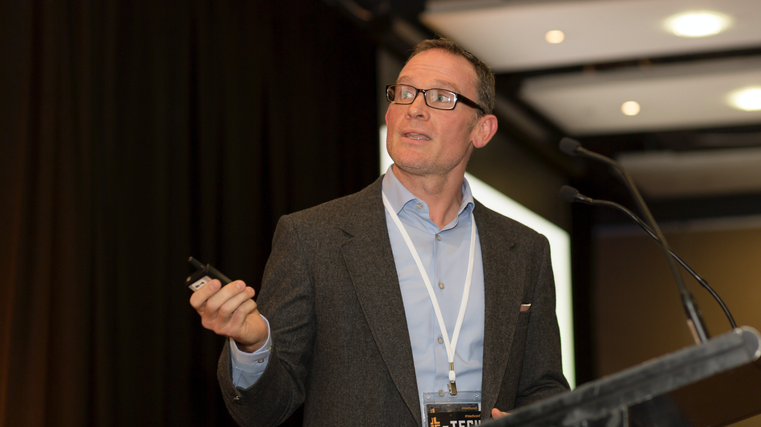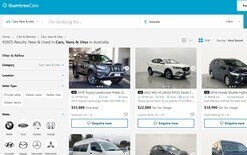Clean cars hit living costs

Experts in the automotive industry have described the government’s clean-car policies as inflationary.
The Imported Motor Vehicle Industry Association (VIA) hosted a webinar on February 14 to discuss the impacts of the clean car discount (CCD) and clean car standard (CCS).
Kit Wilkerson, VIA’s head of policy and strategy, said the inflationary pressures of the programme were “especially strong” in the used-imports sector because its “compact supply dynamic” competes with dealers from other countries and those in Japan to source vehicles for New Zealand.
“Every year the targets will become stricter for the clean-car programme and the supply of vehicles narrower, and this will end up driving up the cost of vehicles,” said Wilkerson, pictured. “An argument could be made this programme is hyper-inflationary with the knock-on effect on the cost of living for mid and low-income Kiwis.”
The CCD had achieved its purpose, he noted, in that a lot of people have looked at buying EVs and plug-in hybrids (PHEVs) as options.
“The programme is based on what was launched in Europe for Europe,” he explained. “That was intended to encourage manufacturers to build more EVs and giving subsidies on them to encourage people to buy more EVs.
“However, original equipment manufacturers [OEMs] have static supply channels, so it doesn’t work like that for us. When subsidies become available, auction houses and other suppliers in foreign jurisdictions just raise their prices.”
VIA has been making the case this is inflationary for some time with costs being passed onto consumers. The government has said it realises that’s the case but the policy has made New Zealand more competitive when coming up against other buyers of these cars.
David Vinsen, VIA’s chief executive, raised the issue of the government running out of money to fund the CCD because the subsidies are more than it can recover in fees. “It may either front-end load the scheme or cough up the money for it, and both of those things are inflationary.”
While Wilkerson said the government would probably need to change the legislation for either of those options to be progressed, Vinsen added it was a case of “fund it or review it” with scenarios including the CCD’s subsidies being reduced or the scheme’s penalties being increased.
Referring to Moana Blue’s CCS management forum in Auckland on February 9, Vinsen said Simeon Brown, National’s transport spokesman, had since sought VIA’s advice on the clean-car programme so his party could “hit the ground running” if elected to form the next government. He added National wanted “a clear idea of what industry associations are doing”.
So far, Labour has indicated there will be no changes to the clean-car programme although a Ministry of Transport review into the CCD is currently under way. National has said it will keep the CCS in some form with the scheme’s costs being hidden in sticker prices.
National has added it’s committed to trying to form an industry solution to inform its policy, while the Greens have suggested increasing the CCD’s penalties. Act wants the CCD and CCS abolished.
Accessing stock
The industry has consistently informed the government there’s insufficient stock when it comes to fully electric vehicles and PHEVs.
This was reiterated by Vinsen during VIA’s webinar. “There isn’t enough used EV stock and the shortage of them is such we cannot hit the targets. We’re last on the list for quota and new-vehicle distributors are struggling to get their quota increased.”
Wilkerson tackled the issue of supply when it comes to the CCS. The industry might “break neutral” in 2026 when it comes to balancing CO2 credits against penalties under the standard, but everything after that will “become negative when it comes to our current supply of vehicles and we cannot see there being a dramatic difference by then”.
He added: “Half of the used imports coming in are already hybrids. By 2027/28, there will be few EVs available in the Japanese market. It’s already getting harder to sell used EVs to consumers globally because they don’t want batteries that have already been used. OEMs could start building cars to take replacement batteries, but that doesn’t appear likely.”
Wilkerson predicted 2030 would be “significant” when it came to volumes for the used-imports industry, while the years towards the end of the decade “are going to get very painful”.
He said more cheap, new EVs made in China were likely to come into the New Zealand at around the $40,000 mark, while “penalties on our vehicles will be significant. We should still be able to import $20,000 to $30,000 cars. But we should be prepared for them to be older and higher mileage, and have penalties attached to them.”
Vinsen commented that used EVs had led the way with Kiwi consumers and their importation had put pressure on the new-vehicle distributors to bring in more new EVs for fleets. “That seems to have worked, but the balance has now changed.”
As for New Zealand in 2022, Tony Everett, sector manager – dealers at the Motor Trade Association (MTA), said about 17,000 new hybrids were imported last year compared to 34,000 used.
He added there were about 16,000 new and 4,000 used EVs registered, while the PHEV totals for both new and used were low and “were almost irrelevant to the discussion”.
As for the CCS, Everett said it appeared many car dealers still didn’t know how the system worked. As an example, he cited a trader he had spoken with on February 13. The dealer had just imported his first car under the standard. By then, the policy had been in place for one-a-half months.
“Had the dealer stockpiled enough before we closed down for the year and was only now taking a tentative toe in the water,” he pondered. Everett added: “We’ve had quite a lot of discussion around some who are working the CCS through in their heads wildly inaccurately.”
He highlighted articles in Autofile magazine that had advised dealers to avoid taking Waka Kotahi emissions data as read and seek out more accurate data, especially when importing European models from Japan.
Everett emphasised that importers and traders really needed to “get their heads into game” now as far as the CCS was concerned because penalties under the policy will only get worse.
Moving forward
Brian Anderton, the MTA’s advocacy manager, was also invited to VIA’s online debate on February 14. He said the MTA was working towards publishing its advocacy manifesto by May 9 on everything the association would like the next government to deliver on.
He said reducing pollution from the transport industry in line with the emissions reduction plan (ERP), which was published last year, was unlikely to be reached if the CCD and CCS were not in place – and with Prime Minister Chris Hipkins scrapping the biofuels mandate.
Anderton said it was important for the industry to look at other tools the government could take on. “The ERP needs to be top of thinking. We have to be able to present other options to get emissions reduced and moved towards better solutions.”
Vinsen tackled the issue of how targets in the ERP could be achieved in the hypothetical absence of the clean-car programme.
He said: “For National, the emissions trading scheme [ETS] should be the primary mechanism for the government so secondary schemes aren’t needed. It’s suggesting some sort of carbon tax is needed to do the heavy lifting.
“If there was a carbon tax on HFCs, then the true cost of their use would be realised with purchases modified accordingly. But no government would have the guts to put that in place because it would be inflationary and unpopular, so it’s stuck between a rock and a hard place.”
Everett said it seemed a bit like revisiting discussions from two years ago when there was a preference for a tax at the pump being the biggest influence on limiting the use of vehicles. Wilkerson added: “That was also our position. The best way is to put the cost on fuel.”
The way forward may ultimately be about political will. Vinsen said: “VIA and other associations are continuously working on these issues. It’s like groundhog day and going back to square one.”
And there’s a bottom line with the clean-car programme. As Wilkerson commented: “There’s a lack of used EVs for our industry to import and a lack of credits to offset penalties.”





